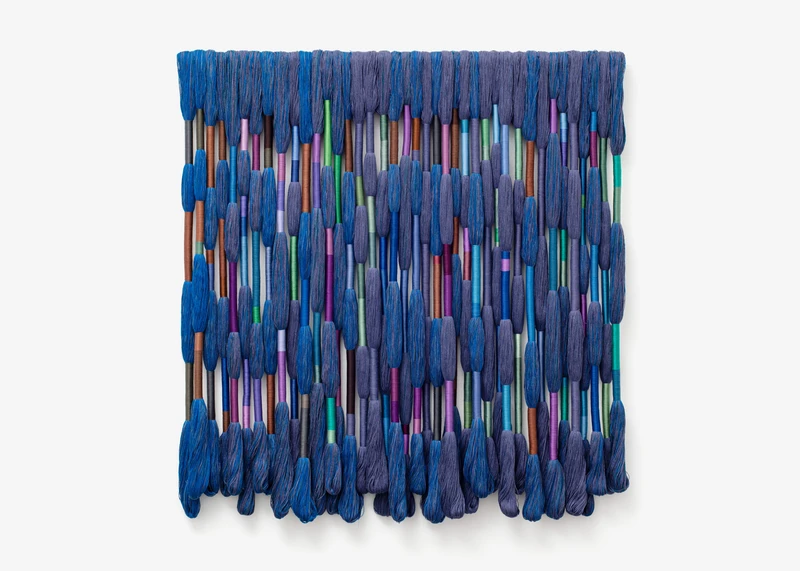Sheila Hicks


b. 1934, United States
American textile artist, (b. Nebraska, USA, 1934), active in France
Writing in 1973, Monique Lévi-Strauss described Sheila Hicks’s (b. Hastings, Nebraska, 1934) life as ‘a tissue of threads woven together on purpose or through chance, fertile encounters.’ While decades have passed since Lévi-Strauss offered this overview, her words remain continually relevant. Since the 1970s, Hicks has established herself as one of the most distinctive artists of her generation. Working to manoeuvre colour, texture and form, the Paris-based artist has produced a rich and complex body of large-scale bas-reliefs, sculptures and installations that indulge in material tactility and the collective experience of space.
Hicks was born in Hastings, Nebraska, in 1934, but she was nomadic from an early age: growing up in the Midwest during the Depression, her father spent much of his time on the road. (‘I always say I grew up in a car’, she told Artforum in 2019. ) From 1954–59, Hicks studied painting with Josef Albers at Yale School of Art; during this time, she attended art historian George Kubler’s class on pre-Columbian art and archeology. ‘I was interested in how the pre-Incas structured thought with threads, with lines’, she told Jennifer Higgie in 2015. ‘The richness of the pre-Incaic textile language is the most complex of any textile culture in history.’
It was while writing a paper on ancient Andean Textiles for Kubler’s class that Hicks taught herself to weave on a backstrap loom of tree branches and assemble threads on a small frame made of painting stretchers. (To this day, she uses painting stretchers to create intimate works, which she refers to as minimes.) In 1957, Hicks was awarded a Fulbright Scholarship, which enabled her to travel extensively around South America, methodically documenting and photographing. She lived and worked in Guerrero, Mexico, from 1959 until 1964, where ‘people made everything that they wore’, as she told the artist Anicka Yi of her time on the Pacific coast, ‘including their shoes.’
Hicks is at her most recognisable when producing monumental hangings, tapestries, bas-reliefs and sculptures: The Questioning Column (2016), first installed at the entrance of the 2016 Sydney Biennale, rose to over 7 metres; Escalade Beyond Chromatic Lands, presented at the 2017 Venice Biennale, saw an avalanche of synthetic, brilliantly colored bales piled up to the ceiling of the Arsenale. For the 2020 iteration of the Nuit Blanche festival in Paris, Hicks suspended a luminous constellation of comets from the colonnades connecting the Musée d’Art Moderne de Paris and the Palais de Tokyo, an architectural reminder of the fleeting nature of lived experience.
On a contrasting scale, Hicks’s intimate minimes allow a valuable glimpse into the artist’s habitual, incessant making process, as well as her enduring interest in construction and material relationships. The works are exemplary of the fact that, for Hicks, spectacle is never the sole ambition. Regardless of scale, hers is a project of tactility, sensuality, hapticity; of felt connection and the communication thereof. ‘Hands, eyes, brain’, notes Hicks, ‘it’s the magic triangulation. It comes from passion, heart and intellect inseparably cemented to your times and to your emotional experiences.’
1.Leslie Camhi, ‘A Career Woven from Life’, New York Times, 31 March 2011
2.Sheila Hicks, ‘Sheila Hicks on Her Life and Art’, Artforum, 04 June 2019
3.Jennifer Higgie, ‘Fibre Is My Alphabet’, frieze, 20 February 2015
4.Anicka Yi, ‘Sheila Hicks: My work is associated with sensuality’, Interview, 2 April 2018
Higgie, 2015